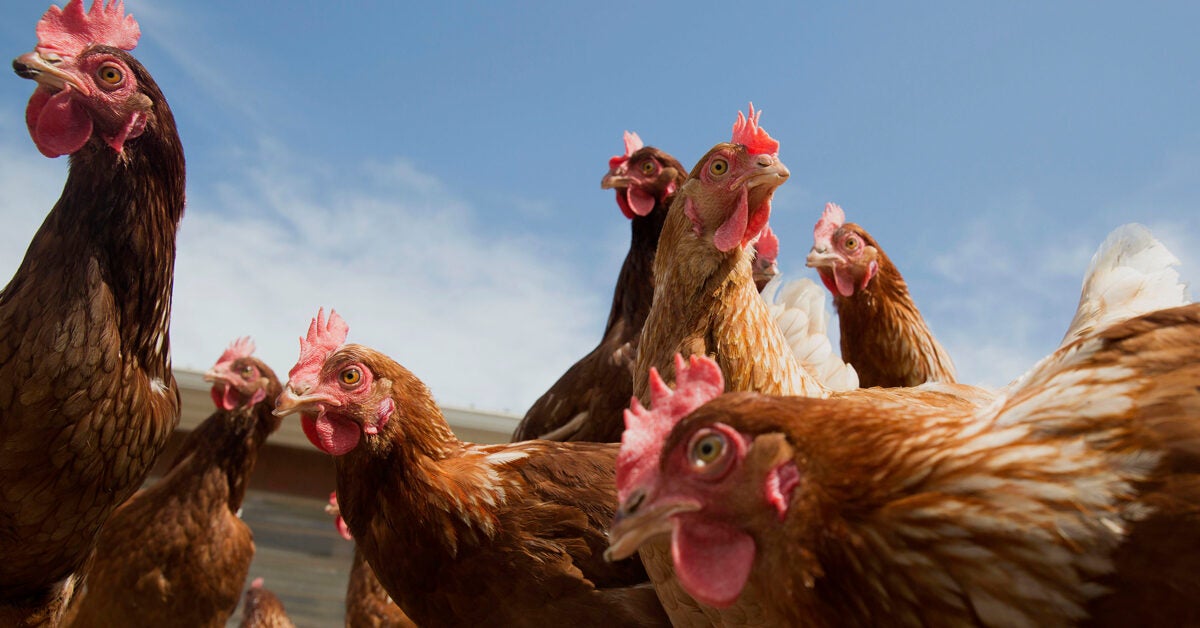Avian Flu Outbreak in the US: What to Know Right Now - Healthline

- The United States confirmed its first case of avian flu in January after a wild South Carolina duck tested positive for the virus.
- Experts found the H5N1 Eurasian strain, a highly pathogenic avian influenza virus type. The same strain had caused a wave of bird flu outbreaks across Europe and Asia.
- U.S. bird flu cases continue to rise as the H5N1 strain makes its way across the States.
- While current evidence suggests H5N1 to be low risk to people, experts say human transmission may cause severe symptoms.
As COVID-19 cases appear to be waning in the United States, experts are cautiously watching the rise of bird flu cases in multiple states.
In January, the United States Department of Agriculture (USDA) detected the first U.S. bird flu case after a hunted wild bird tested positive for the virus in Colleton County, South Carolina.
Experts reported that it was the H5N1 strain, a highly pathogenic avian influenza virus (HPAI) — the same strain responsible for fatal poultry outbreaks across Europe and Asia in late 2021.
According to the
There are currently no human cases of this avian flu in the United States, but it could still have an impact.
In recent weeks following earlier detection, federal officials identified new cases among wild bird populations in Delaware, Florida, North Carolina, and New Hampshire, as well as poultry operations in Kentucky and Virginia.
Some backyard flocks in different states including Maine and New York also had the flu.
The USDA confirmed these cases after farm officials euthanized 29,000 turkeys in southern Indiana, in what was the nation's first confirmed case of H5N1 in commercial poultry operations since 2020.
Federal and state officials are taking steps with poultry farmers to increase biosecurity and prevent new cases. However, this raises concerns about why the bird flu is rising across the States.
"We are not sure how this bird flu strain entered the United States. It could have been imported several times, setting up focal areas of infection in different states," said Dr. William Schaffner, professor of preventive medicine at Vanderbilt University School of Medicine. "Now within the U.S., the concern is that this bird flu could spread more widely, transmitted by migrating wild birds that can mingle with domestic flocks of chickens, ducks, and turkeys."
Experts say the bird flu is an infectious disease, particularly within different bird populations.
"It is influenza season and not a surprise that some flocks are infected with influenza. It may have spread to other areas but has not yet been tested or identified," said Dr. Carl Fichtenbaum, professor of clinical medicine at the University of Cincinnati College of Medicine.
"Indiana borders Kentucky, so one might hypothesize that regional spread is possible, but this does not explain why in Virginia," Fichtenbaum added.
However, Fichtenbaum recommends further surveillance monitoring to accurately determine the spread's cause.
People rarely contract the avian flu in its current form, but it can cause severe disease when it does occur.
"The risk to the general population is low at this time. However, since wild birds may travel, the risk may spread to other states," said Dr. Scott Weisenberg, infectious disease specialist and clinical associate professor of medicine at New York University Langone Health.
According to the
Experts stress that transmissions to humans are rare, but they can be fatal when they occur.
According to Fichtenbaum, "The H5N1 strain has been known to infect humans and cause a more severe form of bird influenza."
Fichtenbaum said there is a chance that a strain can move into the human population and spread more widely.
"The people most at risk are people who spend a lot of time around infected birds," said Dr. Nima Majlesi, director of medical toxicology at Staten Island University Hospital.
But Majlesi noted that H5N1 preparedness efforts have been extensive because the strain circulates and has been responsible for several human infections in the past.
"As per the CDC, the [H5N1] vaccine is being stockpiled for pandemic preparedness by the United States government. The vaccine could be used if an H5N1 virus begins transmitting quickly and efficiently from person to person," he said.
The avian virus is usually present in an infected bird's mucous, feces, or feathers. Human cases are possible when a good amount of the virus gets into a person's eyes, nose, or mouth via contact with the bird.
Experts say
Here are safety tips to follow as stated by the CDC:
- Avoid contact with wild birds (only observe them from a distance).
- Avoid contact with domestic birds that appear sick or dead.
- Avoid contact with surfaces contaminated with the feces of wild or domestic birds.
- Handle raw poultry hygienically.
- Thoroughly cook poultry products before eating.
- Get tested if you come in contact with infected birds.
In addition, Fichtenbaum recommends that you wash your hands before you eat or touch your eyes, nose, or mouth, wear a mask in public to prevent transmission, stay at home if you are sick, and encourage others to do the same.
"Influenza is spread by droplets mostly and can be aerosolized," he said.
The recent bird flu outbreak raises concerns among federal officials, especially as the world works to recover from COVID-19.
Experts say while human bird influenza cases are rare, they can be severe when they occur. However, following safety guidelines set by CDC can help prevent transmission.
Experts say it's safe to consume thoroughly cooked poultry products and treat raw poultry hygienically.

Comments
Post a Comment